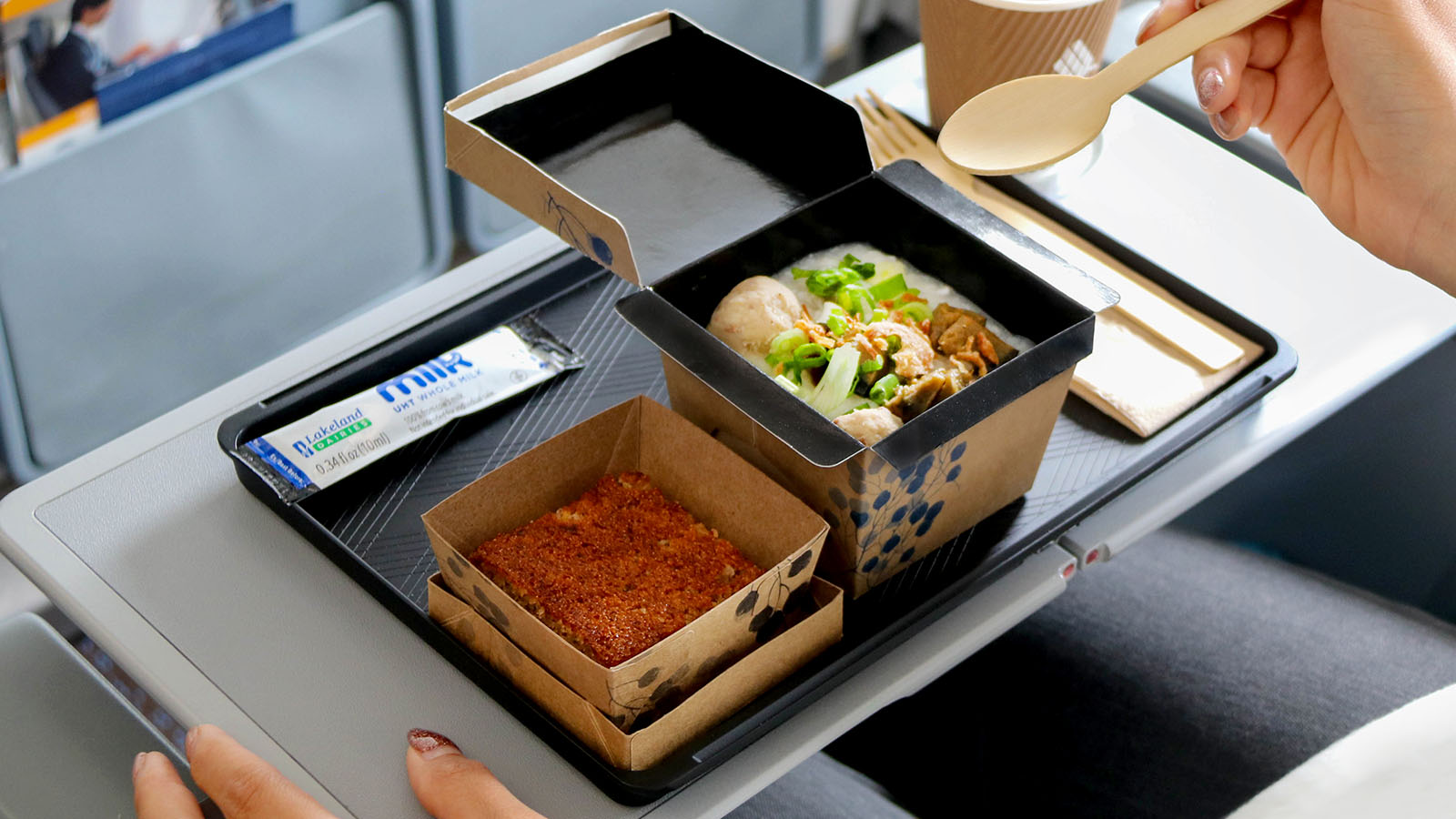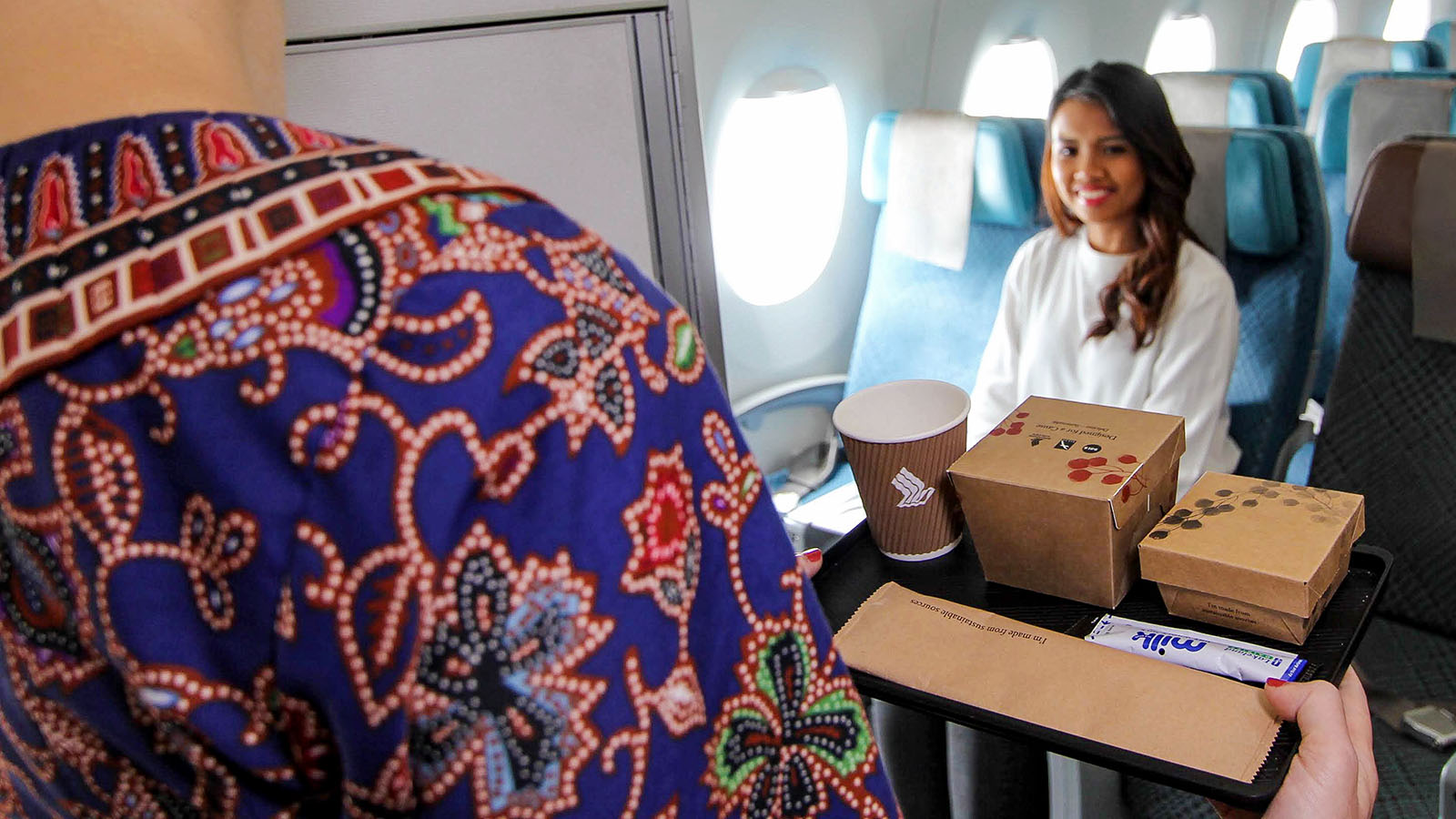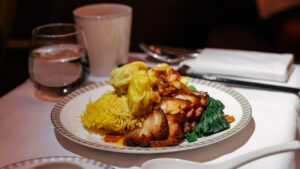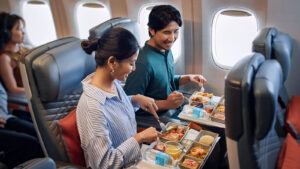Singapore Airlines looks to technology to deliver Economy passengers their first meal choice
While not quite the same as Book the Cook, it'll be the same idea.

What we'll be covering
EXCLUSIVE | Singapore Airlines is widely known for its Book the Cook meal pre-ordering service at the pointy end of the plane. But in Economy Class, the only pre-order choices are currently just ‘special meals’. Rather than pre-selecting a specific dish, special meal requests are simply generic options catering to medical, dietary or religious needs. The food served on board remains a surprise until after departure.
But what if Economy Class got just a sprinkle of the Book the Cook treatment? In an ideal world, as with flyers up the front, travellers in Economy could pre-select their main course before each journey, guaranteeing their first preference. As it happens, Singapore Airlines is working behind the scenes to make that a reality.
Changing long-entrenched inflight service standards will never be an easy task. And things are bound to go wrong along the way, which are learning opportunities. Antony McNeil, Singapore Airlines’ Global Food & Beverage Director for Inflight Service and Customer Experience, shares more. We catch up in Hamburg at the World Travel Catering & Onboard Services Expo (WTCE) – an extension of the Aircraft Interiors Expo (AIX).

Singapore Airlines’ plan for Economy inflight meals
Singapore Airlines has its Book the Cook meal process down pat in premium cabins. But how do you reliably roll out meal pre-ordering in Economy – the cabin with the highest number of travellers on any given flight?
‘In the premium cabin it’s much easier because they’re a smaller footprint,’ McNeil acknowledges. ‘So when you start moving into the Economy cabin, it comes as more of a challenge.’ But that doesn’t mean it can’t be done.
‘It could be as simple as you pre-order your meal.’ Then, behind the scenes, each meal option is colour-coded to speed things up for the crew. ‘It could just be coloured red or green. Okay, seat 41A, you’ve ordered the green – today it’s chicken rice, whatever it is. So it could be as simple as that. It comes down to process.’
Ideally, in Economy, ‘the minute you’ve selected your seat, the next prompt is a meal choice. (Travellers) want efficiency, but they want more personalisation. We are working through that space.’
Beyond meal pre-selection, could AI also potentially help travellers get their first Singapore Airlines meal preference, without them having to ask? After all, airlines have stacks of data as to which dishes are more popular on which routes at different times of the year. When a traveller’s profile can retain their meal ordering history, this could be combined with general flight trends to better inform which meals are loaded where, and in what quantity.
‘I still think, ultimately, it’s going to be human touch that’s going to win the day. AI is just a predictive indicator of the information that we put into it, and it can only be as good as the results that we want through human interaction. So our customer experience still has to be human-centric, driven by people, for people.’
Westpac Altitude Rewards Black

Why are meals served on midnight departures, anyway?
Personally, I’ve never understood the appeal of a full meal service on quick overnight flights – especially Singapore Airlines flights departing around midnight. For instance, SQ231 departs Singapore at 12:45am local time to reach Sydney each morning at 10:25 am.
Think about that for a moment. The flight doesn’t even leave the gate at Changi until almost 3 am local time in Sydney. Stay awake for a meal and you’re lucky to get to sleep by 5 am Sydney local time. Even with a quick nap after that, breakfast comes a couple of hours before landing. Is it really worth staying up ‘all night’ for dinner, when you’ve probably already eaten dinner hours before boarding? Is that inflight meal really worth the subsequent jet lag?

It seems, I’m not the only one who thinks this way. ‘Something we launched just pre-COVID – and it was done quietly for a test and measure – was the opt-out for eating on an overnight flight,’ McNeil shares. (Hooray!)
‘The demand for that was really quite high. The uptake was fast and furious, which surprised all of us to some degree.’ Some people ‘think that everything needs to be full service, that everybody wants to eat all the time. That they want to smash all the great Champagne and food and wine. But oftentimes, if you’ve sat in the lounge for an hour before your flight, especially at midnight … I just want to get to sleep and get to my next point as fast as I can.’
Having said that, most Economy flyers don’t qualify for lounge access – a perk of status. But even so, why offer a meal at all on a midnight flight?
‘Late at night, F&B offerings sometimes close at airports around the world, particularly in China. If you’re in Guangzhou at 10 pm trying to catch the Singapore Alliance flight at midnight, the concessions all close at 8:30/9 pm. So once you’ve cleared immigration, you might be able to get a coffee, but you mightn’t be able to get something else.’
Singapore Airlines’ sustainability efforts in dining
Opting out of an inflight meal doesn’t just help to improve sleep – it also reduces airline catering waste. But moves to improve sustainability aren’t always understood by airline passengers. It’s fair to say that on the meal front, Singapore Airlines has experienced some blowback from passengers in recent years.
‘So recently on Singapore Airlines, we trialled eco-friendly compostable butter (packaging). The reaction was somewhat weird,’ McNeil admits. ‘The rest of the world was happy to see an eco-friendly product. But our Southeast Asian customers were clearly unhappy with the result.’
‘I think also part of a journey is (explaining) the story behind the product; why we’ve chosen (it). But also, social media is really important.’ On the butter, ‘it was a trial, but … the storytelling perhaps wasn’t clear enough from our side to help the customer understand why we were going down this journey path. And of course, if you miss the opportunity, the reaction can be quite severe.’
‘We saw that also with our eco-friendly boxes,’ McNeil continues. He’s referring to the paper-based meal packaging that Singapore Airlines trialled in the Economy cabin early in 2023. ‘We did a trial on some eco-friendly, sustainable paper opportunities (in Economy). (But) the customers are not ready for the experience.’

‘The airlines are trying really very hard along the sustainability angle,’ he highlights. But ‘the customers, in some cases, are just not willing to accept the fact that it’s a paperboard. They want a porcelain casserole (dish), or they want a melamine casserole (container). So again, it’s test and measure. The market will tell you when it’s ready, because the customers will tell you when they’re ready. We just need to be flexible in that approach.’
What’s needed to make a big change?
At the end of the day, McNeil believes that any seismic shift in Singapore Airlines’ onboard meal delivery comes down to the crew. ‘I think you can have all the digitalisation you like – and all the AI reading you like – but you need the buy-in from cabin crew.’
‘Whether it’s a cabin crew moving through the cabin with an iPad, or even some digital device in their eyewear to be able to register and understand what the customers are asking for. Yes, it’s possible. But it’s a transition that will take time. You only need to do it on one or two sectors to measure the success. I think you’ll see that being quite popular into the future.’
When it comes to more significant changes though, McNeil explains how the airline tests the result. ‘To test and measure, it may not just be on one sector. We will test and measure on certain sectors. We’ll do (flights of) 3-5 hours, we’ll do 5-10 hours, and then we’ll do it an ultra-long flight’.
‘The benefit of doing that is that we can get the reaction inflight. We have teams that fly on onboard as customers. They’re reading the customers, they’re reading the cabin crew, they’re gaining experience listening to the feedback from the galley operators (and) cabin attendants. Those little test and measure points allow us to refine further. So when we do go big, we’ve nailed pretty much every touchpoint that we need to work through. It’s not easy.’
‘Once you have buy-in, then we’ll bring the caterers on board. We’ll do a training workshop in Singapore. (Whether) it needs to be Singaporean cuisine, or a laksa, or whatever it may be. (Then,) everybody has buy-in (and) has empowerment to deliver the product, ultimately, for the end user: our customer. Once we understand that, then we’re ready to go. We don’t do things lightly at Singapore Airlines.’
Also read: Singapore Airlines’ gourmet enhancement to Premium Economy
Featured image courtesy of Singapore Airlines.
Stay up to date with the latest news, reviews and guides by subscribing to Point Hacks’ email newsletter.





But bloggers, pax who like to compare meals between airlines and Max Value customers will still eat them.